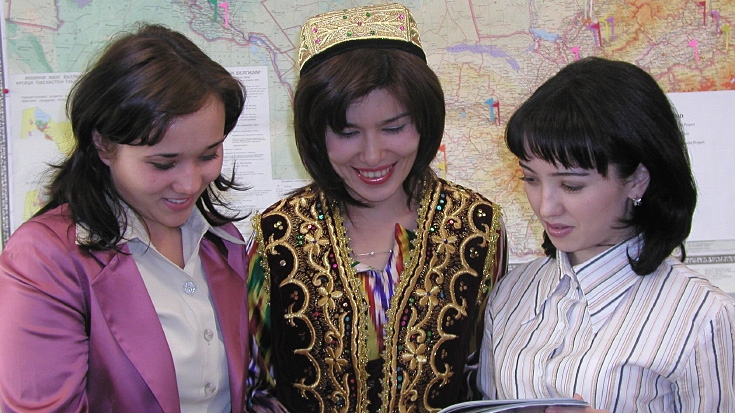A quick glance at the economic trends in Uzbekistan over the last twenty years reveals both a sharp trend upwards in economic growth and a steady shift away from agriculture and toward industry, energy exports, and, in particular, services. Bolstered by an average growth rate of more than 8% a year since the mid-2000s, Uzbekistan has transitioned from a mostly agrarian society to one dominated by the service sector – which now accounts for more than 50% of employment in the country and represents 45% of Uzbekistan’s total Gross Domestic Products (GDP).
However, while the labor market in the country has undergone a major transformation over the last two decades, the country’s education system has been slow to react – creating a key challenge for policymakers in Uzbekistan: matching education outcomes, especially with regards to tertiary education, to the needs of new labor market demands.
Although Uzbekistan - a lower middle-income country with a population of 30 million people - needs an increasingly diverse, well-educated, and highly-skilled workforce to continue on its current path of economic development, the tertiary education system in the country is plagued by many challenges, making it increasingly difficult to develop this workforce. Today, Uzbekistan has exceptionally low enrollment in universities – out of every ten secondary graduates only one is able to secure a university place because of restrictive admissions quotas. For every one spot available at the tertiary level, there are six applicants - making this a highly competitive process and forcing many potential candidates to enter the workforce without appropriate skills or training.
The result is a surplus of workers who possess only basic skills, creating wider gaps between the needs of the market and the supply of appropriately-trained employees. One recent survey showed that 35% of firms feel that low skill levels among employees pose a “major” or “very severe” obstacle to growth, while another survey found that nearly half of industrial firms report difficulties in hiring sufficient numbers of qualified specialists with higher education.
Recognizing the need to modernize Uzbekistan’s tertiary education system to better adapt to the needs of the country’s economy, experts from the World Bank Group have worked with key stakeholders in the country to analyze the challenges and design policies, recommendations, and interventions capable of overcoming these challenges. One result of this collaboration is a recent report that looks at some of the most critical elements of Uzbekistan’s education system.


